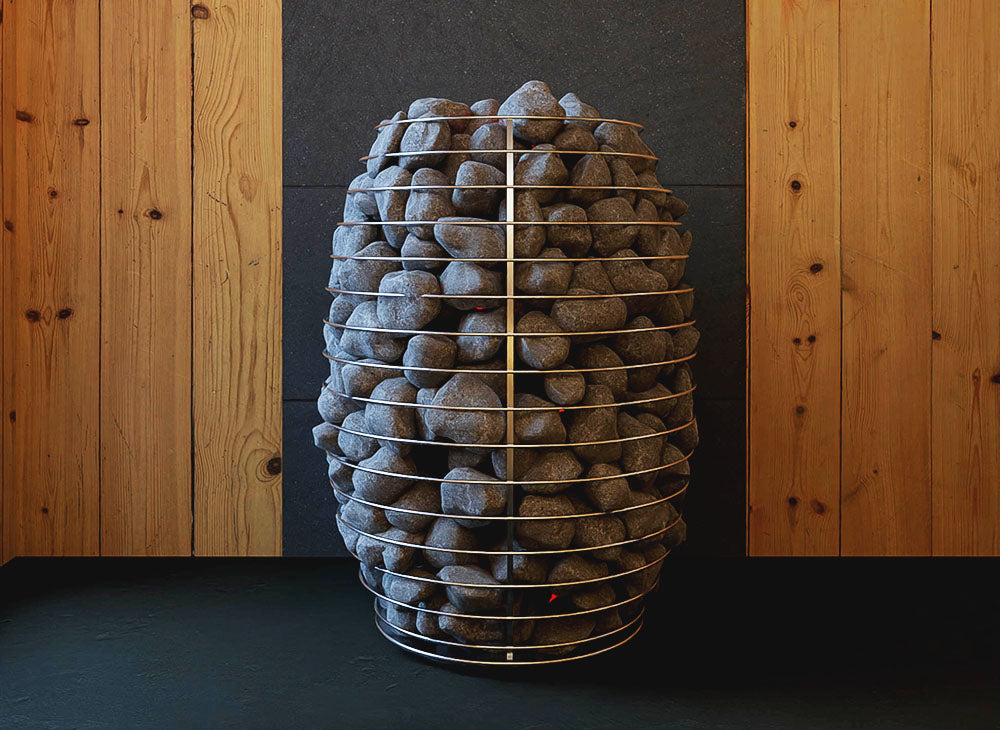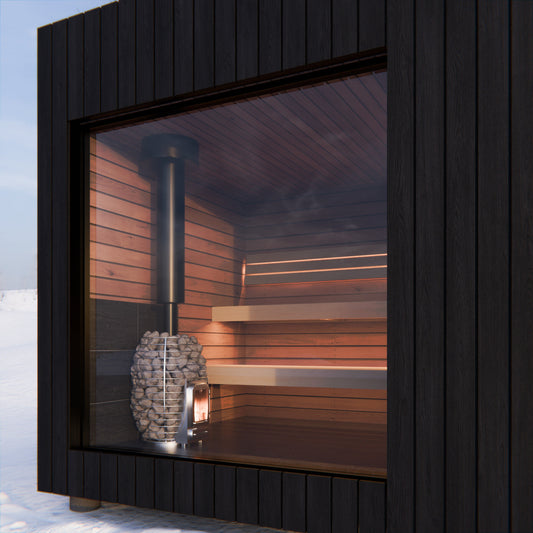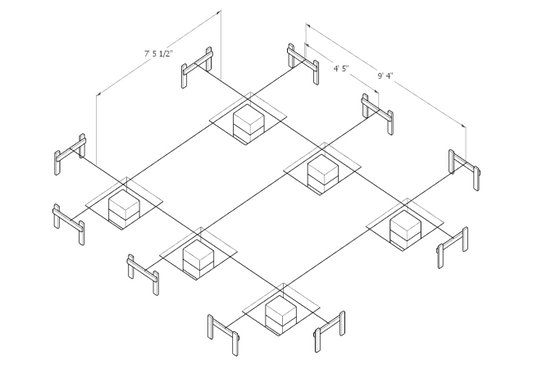
Sauna Heater Guide
It is said that the Sauna Heater is sauna's heart.
If you are not sure which sauna stove is right for you, this article will help you choose the right type of sauna stove and its power.

Wood Sauna Heater
The traditional saunas heated by burning wood have a long history in the Nordic countries, where sauna tradition originates from. Back in the day, people used to use 'smoke saunas' - a sauna that is heated by lighting a fire inside, which heats a big pile of stones. The fire would be then extinguished, the room ventilated to remove any smoke, and the pile of stones would heat the said room. While this worked, it was a bit inconvenient in terms of smoke and smell.
Today, with the invention of steel chimneys, heating a sauna is much easier. The visible flame, the crackling of the wood make for a great vibe in the modern sauna wood heater.
As always in life, there are positive and negative things about the wood fired saunas.
When you choose a wood fired sauna stove, you have to keep in mind that they run hotter than electric sauna heaters. For this reason, it is important to keep away from flammable objects, like interior timber cladding of the walls. There is a possibility of using special safety barriers that prevent heat radiation from heating up sensitive wooden sauna parts.
If you want to avoid feeding the heater from inside the sauna room, you can choose a wood heater that is fed from an adjoining room. This could be from a changing room or from the resting area.
When designing a sauna, it is important to remember about the chimney. The most common is a steel chimney that attaches directly to the stove and goes outside either through the wall or through the roof. It is crucial that the chimney is properly isolated. If you don't have a specialist knowledge about fire safety, it is best to use a chimney that is specially made for purpose. Chimney manufacturers always specify the distances that the chimney needs to be away from combustible materials
Electric Sauna Heater
The Electric sauna heater is the most common type of sauna heater in modern homes and garden saunas. It is extremely convenient as usually the electric heaters are cheaper that wood fired, and they are also easier to install. We don't need to install the chimney, so there are cost and space benefits. Electric sauna stove mounted on a wall also saves on floor space.
For electric sauna heater, the most power efficient would be a three phase power connection. It is not always possible, for example if you are building an off grid sauna in your lake property. In that case, the wood heater may be a better option.
Sauna Heater Stones
Sauna stones have a big impact on 'loyly' (sauna humidity) and temperature. The stones used in sauna heaters need to be resistant to temperature change. They also need to be dense, to store the heat energy. It is also important that they do not emit harmful gases when heated to high temperatures. The size also matters. If the stones are too big, they have a smaller surface area and do not produce enough steam when water is poured on top of them. As you see sauna stones are not just regular stones. They make a big difference to the sauna. The most common sauna stones are: Vulcanite, Gabro, Basalt, Olivine, Granite. My personal favourite are Granite rocks which have been rounded by river water. They also look great when placed on your work desk!

How to control your sauna heater?
Wood heaters are simply controlled by putting in more wood. You can also install a throttle in your chimney. Opening a closing it will allow you to control the rate at which the heater burns the wood.
The electric sauna heaters are controlled by a control unit. It can be an internal one ( inside of the heater ) or external (eg. wall mounted). The external ones are better in my opinion, as they have an easier life and tend to last longer - they do not undergo frequent sauna sessions.
Personally we have went with SAUNABOX - a control unit from a Polish Company Blebox. It suits our needs, has a WiFi capability and a good price. It works well with our HUUM Drop.
Choosing the right sauna heater: Power
To determine the heater power needed to reach the sauna temperatures, you have to calculate the volume of your sauna room.
Assume 1 kW of heater power for every cubic meter (or 40 cubic feet) of the sauna.
Uninsulated surfaces in the sauna
When choosing the sauna heater, you should take into consideration the uninsulated surfaces. That is: Anything that isn't an insulated wall, ceiling or floor. If you have any windows or a glass doors in your sauna, you should add 1kW per each 1 meter squared of surface area.
If your sauna walls are covered in ceramic tiles or natural stone, this also can affect the time it takes to heat up the sauna.
Durability of the stove
The durability of the sauna heater can be impacted by few things. The materials which were used by it's manufacturers - thickness of sheet of metal and type of metal have the biggest impact on the durability, If the stove is running on full power for a long time, it also affects it's durability. This is why if we are not sure which stove to choose, eg. 9kW or 11kW, always go for the higher power. The price difference will be small but the stove should last longer.
For the stove to work correctly, it is also important to choose the right sauna design that has proper ventilation in the design. You can read more about the sauna ventilation in our article.
Characteristics of a good sauna heater
- Quick to heat up : 60 mins is ok, 45 mins is good, 30 mins is great
- Made with durable, thick steel.
- Stainless steel used
- Heat shield included, saves you from nasty burns
- Overheating safety fuse built in
- Looks good in our sauna
See also our latest video about sauna heaters:




1 comment
have you ever design saunas that have both wood and infared installed in them? looking at doing a combo, have an abundnace of cheap wood locally, but would like to have the option of infared as well to get that benefits of infared with the feel of wood.